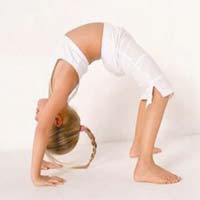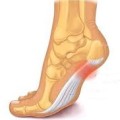Does your child play sports, walk on their toes, or even just participate in gym class? If you answered “yes” to any or all of these, it is important to teach your child to stretch! Do kids really need to stretch before physical activity? You betcha!
Stretching increases blood flow to the muscles resulting in increased flexibility, increased range of motion (ROM), injury prevention, and even enhanced sports performance.
What Kind of Stretch Should My Child Perform?
The 2 types of stretches I am going to discuss are: static and dynamic.
- Static stretches are the most familiar and held for 30 seconds or more. To perform a static stretch you take the joint to the point where you feel comfortable resistance and hold, without bouncing, for the appropriate time while taking deep breaths. Research shows that in people under 65 years old, a 30 second hold is necessary to show change in muscle length. A study by Feland, et al. found that those over 65 years old should hold for 60 seconds! This study on stretching found that if the stretch is held for longer, no increased benefit was noted.
- Dynamic stretches are those that move the joint through full range of motion in a quick manner. Think of a swimmer moving his arms across his chest prior to diving into the water.
Both stretches are important to perform, depending on your purpose of stretching. Static stretches are best performed after sports activities or to decrease muscle cramps. Dynamic stretches are best performed just before athletic competition. Static stretches should be avoided just prior to athletic performance as they have been shown to decrease power and strength. We definitively don’t want to do anything to hinder the child’s performance. 🙂
You can always remember: “Warm up before and cool down after.”
Are There Any Detriments to Stretching for Children?
Yes. As noted previously you need to make sure the range you stretch the joint to is comfortable. If you go to the point of pain, the body will respond by contracting the muscle you are trying to stretch and can end up tearing the muscle. Also, you can cause muscle damage and pain by stretching a “cold muscle,” with a static stretch. Always make sure you perform some type of warm-up (dynamic stretches or 5-10 minutes of biking/walking) prior to static stretching. Lastly, some people have too much flexibility in some joints: it is not advised to stretch a joint that already has more than “normal” motion.
How Can I Tell If My Child Needs to Stretch?
As stated earlier, if your child participates in physical activity they may benefit from stretching. Another visible indicator that you child needs to stretch is if your child is walking on their toes. Children (without neurological injuries) that walk on their toes indicates a tight heel cord (Achilles tendon). The Achilles tendon is the attachment of the gastroc-soleus complex (calf muscles) to the heel. So, if the tendon is stretched too tight it will not allow the child to put his/her heel on the ground. Tightness of the calf muscles commonly leads to Sever’s Disease and plantar fasciitis as well, so it is important to stretch these muscles.
In addition, as children grow their bones grow faster than their muscles. Some children experience large growth spurts where they may grown 5-8 inches in one summer. As you can imagine, this unequal growth of bone and muscles can cause pain. One way to decrease the severity of pain is to have your child perform static stretches daily during and after their growth spurts.
Also, placing high demand (such as running, jumping, or cutting) on a cold muscle can cause muscle tearing (commonly called strains or pulls). So, if your child is participating in an athletic event they should at least perform dynamic stretches to prevent injury.
Stretching Examples Video
Do Kids Really Need to Stretch – Final Thoughts
Although some experts disagree on the importance of stretching, I find it important to incorporate with all children. Most children participate in gym classes at the least and so should be performing dynamic stretches to prevent injury. Also, as our children grow we need to encourage static stretches to prevent or decrease pain with growth spurts.





